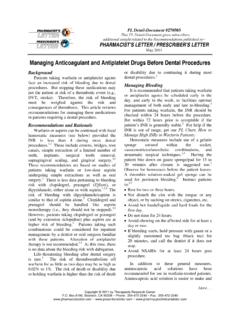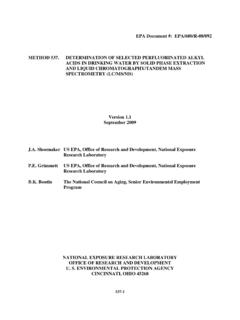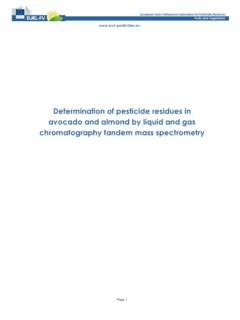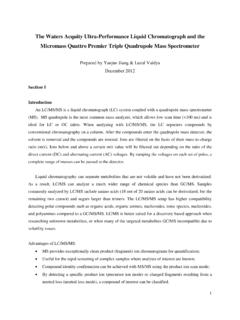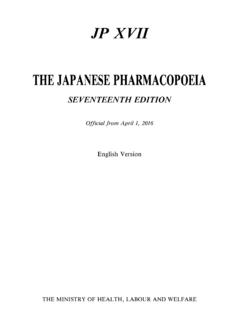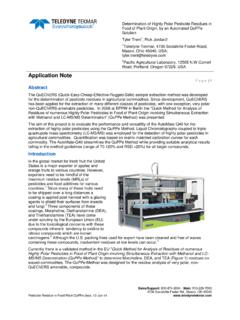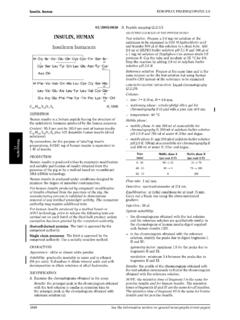Transcription of The Human Intestinal Microbiome in Health and Disease
1 The new england journal of medicinen engl j med 375;24 December 15, 20162369 Review ArticleHuman-associated microbes have primarily been viewed through the lens of a single species and its environment. Advances in culture-independent technologies have shown the enormous diversity, functional capacity, and age-associated dynamics of the Human Microbiome (see the Glossary). A large number of diverse microbial species reside in the distal gastrointestinal tract, and gut microbiota dysbiosis imbalances in the composition and function of these Intestinal microbes is associated with diseases ranging from localized gastroenterologic disorders to neurologic, respiratory, metabolic, hepatic, and cardiovascular illnesses.
2 Much effort is currently concentrated on exploring poten-tial causality and related microbiota-mediated Disease mechanisms, with the hope that an improved understanding will fuel the conception and realization of novel therapeutic and preventive recently, our view of Human microbiology was largely shaped by culture-based studies of single microbes (bacteria, archaea, fungi, and viruses), frequently isolated from patients who had acute infection or chronic Disease . However, sev-eral decades ago, environmental microbial ecologists recognized that the diversity of microbes observed by microscopy far exceeded that of organisms recovered with the use of traditional culture-based A variety of culture-independent molecular assays (Table 1) for detecting and classifying microorganisms (micro-biota) and assessing their encoded genes ( Microbiome ) and gene products showed From the Division of Gastroenterology, Department of Medicine, University of California, San Francisco, San Francisco ( ).
3 And the Novo Nordisk Founda-tion Center for Basic Metabolic Research, Faculty of Health and Medical Science, University of Copenhagen, Copenhagen ( ). Address reprint requests to Dr. Lynch at the Division of Gastroenterology, Department of Medicine, University of California, San Francisco, 513 Parnassus Ave., S357D, San Francisco, CA 94143, or at susan . lynch@ ucsf . edu; or to Dr. Peder-sen at the Novo Nordisk Foundation Cen-ter for Basic Metabolic Research, Faculty of Health and Medical Sciences, Univer-sity of Copenhagen, Universitetsparken 1, 1st floor, DIKU, 2100 Copenhagen, Den-mark, or at Engl J Med 2016;375 : 2016 Massachusetts Medical G.
4 Phimister, , EditorThe Human Intestinal Microbiome in Health and DiseaseSusan V. Lynch, , and Oluf Pedersen, , Biomarker sequencing: The process of cataloguing microbes in a mixed-species community through analysis of sequence variation in a single ubiquitous : The totality of organisms in a given ecosystem ( , the shared Human and microbial ecosystem); also called a : The complete set of small-molecule chemicals found in a biologic : All the genetic material present in an environmental sample, consisting of the ge-nomes of many individual archaea: Methane-producing microbes of the ancient Archaea : The collection of all genomes of microbes in an : The microbes that collectively inhabit a given : Typically benign endogenous microbes with the capacity, under altered ecosystem conditions, to elicit : Nutritional substrates that promote the growth of microbes that confer Health benefits in the : Live microbes that confer Health benefits when administered in adequate amounts in the.
5 Formulations consisting of a combination of prebiotics and New England Journal of Medicine Downloaded from by BRADFORD KNEY on December 18, 2016. For personal use only. No other uses without permission. Copyright 2016 Massachusetts Medical Society. All rights reserved. n engl j med 375;24 December 15, 20162370 The new england journal of medicinethat microbes rarely exist in isolation. Instead, they subsist in complex, interactive, interking-dom, multispecies microbial communities with-in a habitat. As the field has developed, it has become apparent that virtually every habitat, and every organism, on earth has its own microbiota. This includes the Human holobiont, a conglom-erate of mammalian and multispecies microbial cells in spatially segregated ecosystems, the ge-nomic content of which is inf luenced by both topography and biologic humans, the gastrointestinal tract repre-sents a large microbial ecosystem, housing sev-eral trillion microbial cells.
6 An integrated cata-logue of the Human fecal microbial metagenome, based on data from 1200 persons in the United States, China, and Europe, identified an aggre-gate million microbial genes across these fecal More than a billion years of mammalian microbial coevolution has led to interdependency. As a result, the Intestinal micro-biota play a critical role in the maturation and continued education of the host immune re-sponse4; provide protection against pathogen overgrowth5; inf luence host-cell proliferation6 and vascularization7; regulate Intestinal endocrine functions,8 neurologic signaling,9 and bone den-sity10; provide a source of energy biogenesis11 (5 to 10% of daily host energy requirements); biosyn-thesize vitamins,12 neurotransmitters,9 and multi-ple other compounds with as yet unknown tar-gets; metabolize bile salts13; react to or modify specific drugs.
7 And eliminate exogenous toxins14 (Fig. 1). The relevance of these microbial activi-ties to Health probably varies across the Human population. Given the diverse functional reper-toire of the gut microbiota, it is not surprising that they are the focus of research into a broad range of chronic diseases, including cancer and diseases with inf lammatory, metabolic, cardio-vascular, autoimmune, neurologic, and psychi-atric Microbiota across the AgesThe in utero environment has, until relatively recently, been considered sterile. However, DNA-based microbiota studies have detected bacterial species in the placentas of healthy mothers,15 in amniotic f luid of preterm infants,16 and in At parturition, the mode of delivery in-f luences postnatal microbial ,19 A study Table 1.
8 Tools for Analyzing and ConsBiomarker sequencing ( , 16S rRNA gene or internal transcribed spacer region)*Community compositionNext-generation sequencingIs cost-effective, is semiquantitative, permits resolution of genus level and in some cases species level; shorts reads may make accurate classification difficultMetagenomicsGeneration of draft genomes, functional capacity, growth dynamicsNext-generation sequencingHas capacity for strain-level reconstruction, is quantitative, allows for functional annotation with pathway predictions; is currently very costly, has community coverage that may be relatively shallow in more com-plex assemblagesMetatranscriptomics (RNA sequencing)Gene expressionNext-generation sequencingHighly expressed genes are more likely than others to be detected, deple-tion of Human transcripts is possible, requires immediate preservation or processing of fresh or snap-frozen Intestinal specimensMetaproteomicsProtein expressionLiquid or gas chromatography mass spectrometryPrimarily detects dominant proteins.
9 Makes removal of host-derived pro-teins impossibleMetabolomicsMetabolic productivityLiquid or gas chromatography mass spectrometry or magnetic resonance spectroscopyIs semiquantitative; can be targeted or untargeted; detects metabolites that are platform- and database-dependent; detects metabolites that may originate from microbes, diet, or host* The term rRNA denotes ribosomal New England Journal of Medicine Downloaded from by BRADFORD KNEY on December 18, 2016. For personal use only. No other uses without permission. Copyright 2016 Massachusetts Medical Society. All rights reserved. n engl j med 375;24 December 15, 20162371 Human Intestinal Microbiome in Health and Diseaseof fecal samples (collected 4 days, 4 months, and 12 months after birth) from Swedish infant mother dyads showed that the gut microbiota of vaginally delivered neonates is taxonomically similar to the maternal gut and vaginal micro-biota,19 though strain-level analyses are required to confirm the exact source of neonatal gut microbial diversity.
10 This study also showed that the composition of the gut microbiota in infants changes to resemble adult microbiota in associa-tion with the cessation of breast-feeding (not the introduction of solid food).19 During the first postnatal years, bacterial diversity and functional capacity expand,12 an observation that is consistent with improved cysteine metabolism and augment-ed fermentation pathways (encoded by lactic acid bacteria acetolactate decarboxylase [ ] and 6-phosphogluconate dehydrogenase [ ]), as well as more efficient bacterial foraging of Intestinal mucosal mucins12 (a capacity that con-fers colonization advantages20).
